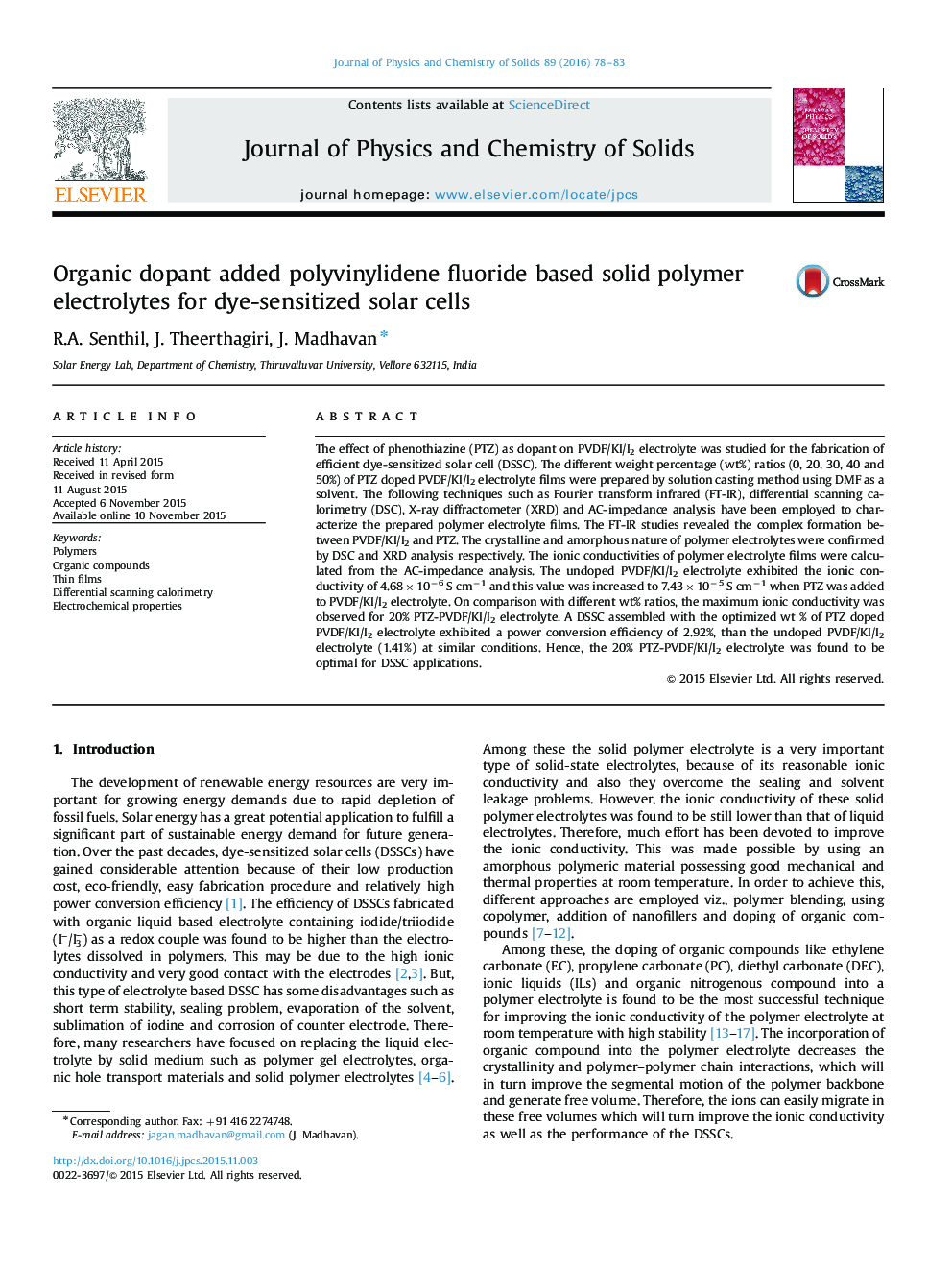| Article ID | Journal | Published Year | Pages | File Type |
|---|---|---|---|---|
| 1515484 | Journal of Physics and Chemistry of Solids | 2016 | 6 Pages |
•The phenothiazine doped PVDF/KI/I2 electrolyte films were prepared by solution casting method.•The best ionic conductivity was shown by 20 wt% phenothiazine doped PVDF/KI/I2 electrolyte.•The conversion efficiency of the DSSC fabricated using the optimized polymer electrolyte was found to be 2.92 %.
The effect of phenothiazine (PTZ) as dopant on PVDF/KI/I2 electrolyte was studied for the fabrication of efficient dye-sensitized solar cell (DSSC). The different weight percentage (wt%) ratios (0, 20, 30, 40 and 50%) of PTZ doped PVDF/KI/I2 electrolyte films were prepared by solution casting method using DMF as a solvent. The following techniques such as Fourier transform infrared (FT-IR), differential scanning calorimetry (DSC), X-ray diffractometer (XRD) and AC-impedance analysis have been employed to characterize the prepared polymer electrolyte films. The FT-IR studies revealed the complex formation between PVDF/KI/I2 and PTZ. The crystalline and amorphous nature of polymer electrolytes were confirmed by DSC and XRD analysis respectively. The ionic conductivities of polymer electrolyte films were calculated from the AC-impedance analysis. The undoped PVDF/KI/I2 electrolyte exhibited the ionic conductivity of 4.68×10−6 S cm−1 and this value was increased to 7.43×10−5 S cm−1 when PTZ was added to PVDF/KI/I2 electrolyte. On comparison with different wt% ratios, the maximum ionic conductivity was observed for 20% PTZ-PVDF/KI/I2 electrolyte. A DSSC assembled with the optimized wt % of PTZ doped PVDF/KI/I2 electrolyte exhibited a power conversion efficiency of 2.92%, than the undoped PVDF/KI/I2 electrolyte (1.41%) at similar conditions. Hence, the 20% PTZ-PVDF/KI/I2 electrolyte was found to be optimal for DSSC applications.
Graphical abstractFigure optionsDownload full-size imageDownload as PowerPoint slide
